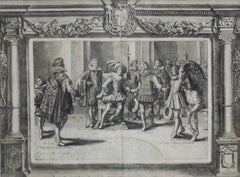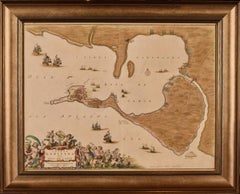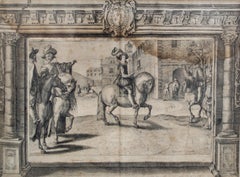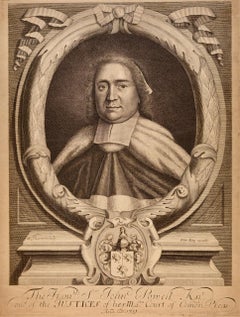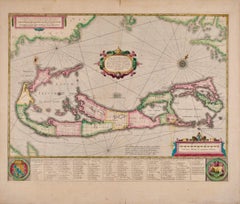Art by Medium: Engraving
17th Century Old Masters Art by Medium: Engraving
Engraving
Mid-17th Century Old Masters Art by Medium: Engraving
Engraving
17th Century Old Masters Art by Medium: Engraving
Engraving
17th Century Old Masters Art by Medium: Engraving
Engraving
Early 18th Century Old Masters Art by Medium: Engraving
Engraving
Early 17th Century Old Masters Art by Medium: Engraving
Engraving
Mid-18th Century Old Masters Art by Medium: Engraving
Engraving, Etching
Early 18th Century Old Masters Art by Medium: Engraving
Engraving
16th Century Old Masters Art by Medium: Engraving
Engraving
16th Century Old Masters Art by Medium: Engraving
Engraving
Early 18th Century Old Masters Art by Medium: Engraving
Engraving
Mid-17th Century Old Masters Art by Medium: Engraving
Handmade Paper, Engraving, Etching
Early 18th Century Old Masters Art by Medium: Engraving
Paper, Engraving
Mid-17th Century Old Masters Art by Medium: Engraving
Engraving
2010s Old Masters Art by Medium: Engraving
Emulsion, Ink, Sumi Ink, Watercolor, C Print, Color, Engraving, Other Me...
Late 18th Century Old Masters Art by Medium: Engraving
Watercolor, Laid Paper, Engraving, Etching
16th Century Old Masters Art by Medium: Engraving
Engraving
16th Century Old Masters Art by Medium: Engraving
Engraving
19th Century Old Masters Art by Medium: Engraving
Engraving
Mid-17th Century Old Masters Art by Medium: Engraving
Drypoint, Laid Paper, Etching
Mid-17th Century Old Masters Art by Medium: Engraving
Laid Paper, Engraving
Early 19th Century Old Masters Art by Medium: Engraving
Engraving
Early 19th Century Old Masters Art by Medium: Engraving
Engraving
16th Century Old Masters Art by Medium: Engraving
Engraving
19th Century Old Masters Art by Medium: Engraving
Engraving
19th Century Old Masters Art by Medium: Engraving
Engraving
Mid-17th Century Old Masters Art by Medium: Engraving
Laid Paper, Engraving, Etching
Early 18th Century Old Masters Art by Medium: Engraving
Engraving
Mid-17th Century Old Masters Art by Medium: Engraving
Watercolor, Handmade Paper, Engraving
Early 17th Century Old Masters Art by Medium: Engraving
Engraving
19th Century Old Masters Art by Medium: Engraving
Engraving
19th Century Old Masters Art by Medium: Engraving
Engraving
19th Century Old Masters Art by Medium: Engraving
Engraving
Early 17th Century Old Masters Art by Medium: Engraving
Handmade Paper, Laid Paper, Engraving
16th Century Old Masters Art by Medium: Engraving
Laid Paper, Engraving, Intaglio
Late 17th Century Old Masters Art by Medium: Engraving
Engraving
19th Century Old Masters Art by Medium: Engraving
Engraving
19th Century Old Masters Art by Medium: Engraving
Engraving
Late 17th Century Old Masters Art by Medium: Engraving
Engraving
19th Century Old Masters Art by Medium: Engraving
Engraving
19th Century Old Masters Art by Medium: Engraving
Engraving
19th Century Old Masters Art by Medium: Engraving
Engraving
19th Century Old Masters Art by Medium: Engraving
Engraving
19th Century Old Masters Art by Medium: Engraving
Engraving
19th Century Old Masters Art by Medium: Engraving
Engraving
19th Century Old Masters Art by Medium: Engraving
Engraving
19th Century Old Masters Art by Medium: Engraving
Engraving
1870s Old Masters Art by Medium: Engraving
Engraving
19th Century Old Masters Art by Medium: Engraving
Engraving
19th Century Old Masters Art by Medium: Engraving
Engraving
Mid-18th Century Old Masters Art by Medium: Engraving
Engraving, Laid Paper, Woodcut
19th Century Old Masters Art by Medium: Engraving
Engraving
19th Century Old Masters Art by Medium: Engraving
Engraving
19th Century Old Masters Art by Medium: Engraving
Engraving
19th Century Old Masters Art by Medium: Engraving
Engraving
19th Century Old Masters Art by Medium: Engraving
Engraving
19th Century Old Masters Art by Medium: Engraving
Engraving
19th Century Old Masters Art by Medium: Engraving
Engraving
